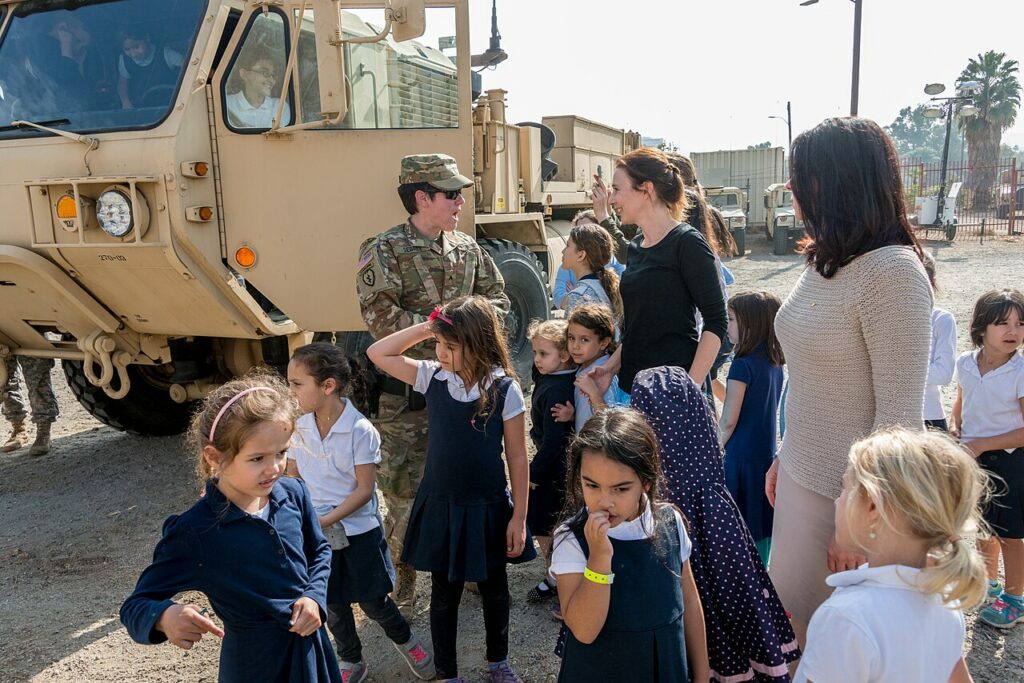
(Scypre.com) – President Trump has activated 2,000 California National Guard troops in response to escalating anti-ICE demonstrations in Los Angeles. The federal order, issued late Sunday night under Title 10 U.S. Code 12406, marks the first time in six decades that a president has deployed the National Guard without a state governor’s approval. The move follows a week of mounting unrest tied to immigration enforcement operations and has ignited a fierce political clash between the federal government and California officials.
The unrest began on June 6 after U.S. Immigration and Customs Enforcement (ICE) agents carried out a large-scale sweep across Southern California, arresting over 100 undocumented individuals. Peaceful protests quickly gave way to violence, with demonstrators setting vehicles ablaze, smashing windows, and clashing with local police and federal officers. In Paramount and Compton, rioters reportedly hurled bricks and Molotov cocktails, prompting law enforcement to escalate crowd-control tactics, including the use of tear gas and rubber bullets.
President Trump’s memo authorized not only the federalization of California’s National Guard but also put active-duty military units from Camp Pendleton on standby. Defense Secretary Pete Hegseth described the protests as a “violent insurrection,” suggesting ties to foreign cartels and organized agitators. Military vehicles were seen patrolling downtown L.A., and Guard troops were deployed to secure federal buildings, transportation hubs, and high-risk neighborhoods. The Department of Homeland Security reported that over 300 personnel from the 79th Infantry Brigade Combat Team had joined the mission.
California leaders, including Governor Gavin Newsom and Los Angeles Mayor Karen Bass, denounced the deployment as an unconstitutional overreach. Newsom condemned the action as “reckless federal theater” and vowed to pursue legal avenues to challenge the troop presence. Mayor Bass walked a fine line—defending citizens’ rights to protest while condemning violence—but refused to endorse Trump’s intervention. Former Vice President Kamala Harris also criticized the move, calling it a dangerous step toward authoritarian control.
Journalists covering the riots reported chaotic and dangerous conditions. Australian correspondent Lauren Tomasi was hit by a rubber bullet while broadcasting live, highlighting the unpredictable nature of the street-level confrontations. Arrests continued to climb, including individuals accused of attacking deputies with incendiary devices. Viral footage of American flags being burned and protesters defacing federal buildings sparked outrage across social media platforms and further polarized public opinion.
Legal experts are closely watching the situation as a test of executive power. While the Posse Comitatus Act generally prohibits military involvement in domestic law enforcement, federal officials argue that the scale and nature of the violence justify the exception. Comparisons have been drawn to previous deployments in U.S. history, including the 1992 L.A. riots and federal interventions during the Civil Rights era.
As of Monday, the National Guard is expected to remain in Los Angeles for up to 60 days unless order is restored sooner. California’s legal team is reviewing potential court actions, and civil rights groups have announced planned demonstrations in opposition to the military presence. With the nation watching, the deployment is sure to influence debates over immigration, law enforcement, and presidential authority for months to come.